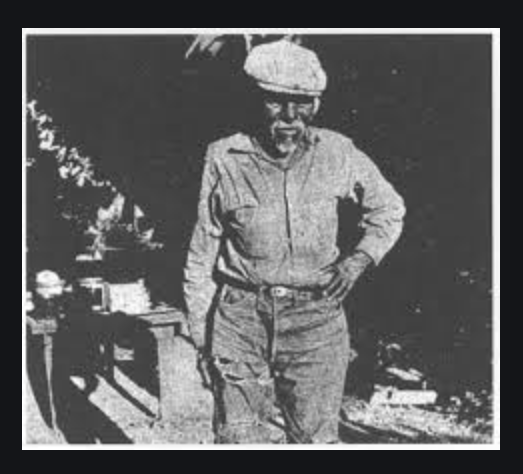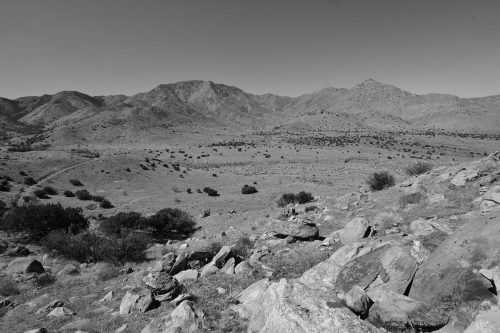
Adjacent to the west side of our property lies Bob Rabbit Canyon – a testament to one of the most respected figures in Kawaiisu history. Bob Rabbit (1850-1934) was the last traditional rain doctor of the Kawaiisu people, indigenous to the Tehachapi Mountains and surrounding areas of what is now Kern County, California – and the Monkey Flower Ranch.

Bob Rabbit held a position of tremendous importance within the Kawaiisu community. As a rain doctor, he was entrusted with sacred knowledge passed down through generations – intricate understanding of weather patterns, botanical medicine, and spiritual practices that could “call” the rain during times of drought. His role transcended mere weather forecasting; he was a spiritual leader who maintained the delicate balance between his people and the natural world.
The Kawaiisu, whose ancestral territory stretched from the southern Sierra Nevada through the Tehachapi Mountains and into portions of the Mojave Desert, relied heavily on seasonal rains for their traditional food sources. When rainfall became scarce, communities would turn to their rain doctor. Bob Rabbit’s ceremonies involved extensive preparation, including fasting, specific prayers, and the creation of ceremonial items imbued with spiritual significance.
Bob Rabbit lived during a period of profound transition for the Kawaiisu people. Born around 1850, his lifetime spanned the aftermath of the California Gold Rush, the expansion of ranching and farming into traditional Kawaiisu territories, and the gradual erosion of traditional ways of life. Despite these challenges, Bob Rabbit maintained the ancient practices of his ancestors, becoming a living repository of Kawaiisu knowledge and tradition.
Residents of early Weldon recall Bob Rabbit as a dignified presence, often seen traveling between communities to perform rain ceremonies during particularly dry seasons. His deep connection to the land was evident in his intimate knowledge of local plant life, weather patterns, and sacred sites throughout the region.

Bob Rabbit Canyon, adjacent to what is now private property in Weldon, earned its name through its association with this remarkable individual. Local accounts suggest that Bob Rabbit frequently conducted ceremonies in this canyon, drawn to its unique topography and spiritual significance. The canyon’s microclimate, with its natural springs and distinctive plant life, made it an ideal location for rain ceremonies.
Some of the oldest families in the area still recount stories passed down from their grandparents about witnessing Bob Rabbit’s ceremonies. These accounts describe elaborate rituals that would sometimes last for days, with Bob Rabbit entering deep meditative states while performing specialized songs and prayers believed to influence weather patterns.
When Bob Rabbit passed away in the mid-1930s, he was one of the last fluent speakers of the Kawaiisu language and one of the final practitioners of traditional Kawaiisu spiritual ways. His death marked the end of an era – the unbroken line of rain doctors that had guided the Kawaiisu people through countless seasons of drought and plenty had come to an end.
Today, Bob Rabbit Canyon stands as more than just a geographical feature; it represents the enduring legacy of the Kawaiisu people and their profound connection to this land. For residents of Weldon and surrounding communities, the canyon serves as a reminder of the rich cultural heritage that shaped this region long before modern settlement.
The canyon’s rugged beauty, with its seasonal wildflowers and diverse wildlife, continues to evoke the spirit of the man whose name it bears – a dedicated keeper of ancient wisdom who understood the sacred relationship between humans and the natural world. Though the rain ceremonies have fallen silent, Bob Rabbit’s legacy lives on in the landscape that bears his name and in the stories still told by those who call this special corner of California home.
Finding Bob Rabbit’s Canyon from the Monkey Flower Ranch is pretty easy. You walk on out to the west side gate, and you can either go over the ridge via Birthday Rock, or take the road.

For more information about what you can find near the ranch, please check out this page: Hiking in the High Desert.